Pyar ka Mausam Aaya – Nasir Hussain
- K V Ramesh | kvr4060@gmail.com
There is a joke that Nasir Hussain left Lucknow with one file containing one story that he kept repeating again and again in various combinations! First as a writer, then as a producer, then a writer-producer-director! Most of his big hits have a common theme.
The hero opposes his estranged father (or mother). The father is the guardian of his best friend’s daughter, who naturally is the heroine. The villain assumes the hero’s identity and presents the hero as an impostor to the father. Both hero and villain work for the father. And so on. Deception by the hero or villain is a common theme. The “poor” hero pretends to be rich, which is the juice for further dramatic confrontations. The six or seven songs in this mix happen wherein the hero and heroine fall in love, depart and come together again!
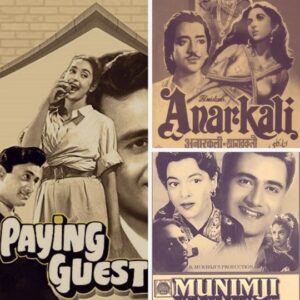
Despite these stereotyped, even boringly repetitive stories, Nasir Hussain knew one element of filmmaking had to be strong – Music! From his first stint as a director (1957) to his last film as a producer (1992), the music in his movies always told a story. “Breezy entertainer” is a common catchword to describe his films. Yes – they may not have any great themes or messages, but the songs stood by themselves and forwarded the story, as was the norm with some of the finest filmmakers of those years.
Most people will admit that Nasir Hussain films are all great musical entertainers that are box office hits, making the careers of major stars and starting a long association with Rahul Dev Burman. It is challenging to select a single song as an example of great picturization or telling a story. Most songs in all his film have excellent picturizations. The majority of the songs in each film reads like a hit parade of different years.
Starting as a writer in Shashadhar Mukherjee’s FIlmistan Hussain wrote Anarkali (1953), Munimji (1955) Paying Guest 1957 (screenplay & dialogue). Turning writer-director in 1957 with Tumsa Nahin Dekha, he changed Shammi Kapoor’s fortune forever, which Kapoor has generously acknowledged in many online interviews. The catchy songs still reverberate today and are youthful in content and style. OP Nayyar ensured the songs became huge hits, from the titular “Yun to humne laakh haseen dekhe hain” through “Chhupne wale saamne aa” to the grand finale of “Sar par topi laal haath me resham ka rumaal“, every well-crafted song was picturized boisterously, giving a feeling of merriment and fun.
Most of Hussain song picturizations show such a fun element in the picturizations. Be it, the title song with the hero and heroine “sitting” on a horse cart or the final boisterous duet in the open fields, the joy of both the hero and the heroine is well expressed in these songs. Dil Deke Dekho (1959) was a virtual repeat of Tumsa Nahin Dekha’s story. Here, the mother was estranged from the son, and the father had become blind and dependent on the son. At the same time, the heroine was under the care of the hero’s mother! Usha Khanna’s entry as probably one of the youngest music directors was in itself an event, and all the songs were major hits, even though at least three of them were direct copies of foreign hits. The concluding song of the movie Meri Neeta was a direct copy of the Paul Anka hit Diana. Yet all of them had a modern sensibility and were picturized with his trademark fun.
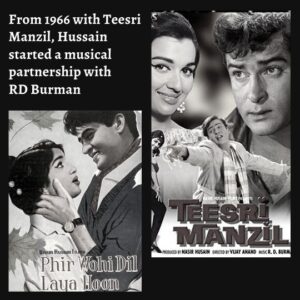
Hussain came into his own in the 1960s when turning producer-director and writer, ensuring complete control of the film. This did lead to some innovative song picturizations and situations. When the hero “Monto”, who is pretending to be a rich man “jumps off a moving train”, the frightened heroine discovers to her relief that he has landed atop a moving car leading to the song Jab Pyar Kisise Hota Hai. An early example of the famous Darjeeling toy train as the “location” for a song as hero and heroine parallel each other in train and car. (Aradhana’s Mere Sapnon ki rani too had a similar situation, but that’s for some other day). When the devastated heroine finds out that the hero was pretending to be a rich man, she cozies up to the villain, to which the hero sings a mournful song Teri zulfon se about being separated from his true love while all he wanted was to be in her arms.
Phir Wohi Dil Laya Hoon (1963) was Hussain’s first color film. The same story was repeated about the hero being separated from his father and wooing the heroine whose “guardian” was the hero’s father! Naturally, the romance happened in Kashmir! This time OP Nayyar rose to the occasion again and delivered one hit song after another. One of the finest songs in the film is about a drunk heroine who expresses her growing love for the hero. Majrooh’s lyrics bring forth this feeling as Asha Parekh (through Asha Bhosale) sings the incredibly haunting Aankhon se jo utri hai dil mein. Every other song was equally well picturized; it is challenging to find a single song that is not out of place in the film.
From 1966 with Teesri Manzil, Hussain started a musical partnership with RD Burman that continued till 1988. Any top 10 or top 20 songs of Pancham will easily include at least one of two songs from Hussian;s films since Pancham brought a much sought-after “Western” sensibility to Hussain’s films wherein the characters were anything but weeping or wilting people. The heroine was usually dressed in modern fashion (of the day) and so too for other characters. Dev Anand slated to be the hero, pulled back, due to some misunderstandings with Nasir Hussain. Once again, Shammi Kapoor benefited and became the hero (just like Tumsa Nahin Dekha where Dev Anand had pulled out of the production). The film became a huge hit and is still popular with everyone, especially the music. (Vijay Anand showed why he was the master of song picturizations in song after song, but that’s for another day and another issue).
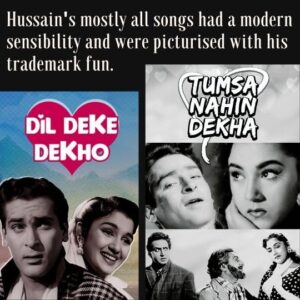
1967 brought Baharon Ke Sapne, one of Hussain’s most personal films. Since he was accused time and again of making “frivolous” films, he turned deadly serious. The movie about the lives of the poor in a textile workers colony was so serious that even Panchams’ effervescent music couldn’t lift it from its journey into a flop. The Lata Mangeshkar songs like Aaja Piya tohe pyar doon, Kya Jaanu sajan, Chunri Samhal gori are all well known. But among these fields of gold is another hidden nugget that was not given its due. Zamaane ne maare jawan kaise shows a then-unknown Rajesh Khanna walking the streets of Bombay in search of employment, going from door to door while Majrooh writes, “Jala dhoop me kitni aankhon ka noor“. Shot in black and white, the film’s somewhat tragic ending was converted to a happy ending; yet that didn’t sit well with the public who rejected it with “this is a Nasir Hussain film?”
Immediately Hussain cast all his social aspersions and “message films” to the wind and returned to doing what he did best – musical entertainers. With that same one-page story!
Pyar Ka Mausam (1969) was again the old wine in a new bottle and had the same story. Pancham made a guest appearance as a buffoonish conman with the equally buffoonish Rajendranath, a mainstay in Hussain’s films from Dil Deke Dekho. This time Shashi Kapoor romanced Asha Parekh. The storyline was again the same about a lost son returning back to take his place only to see the villain there. Tum Bin Jaoon Kahaan, Pyar ka Mausam aaya, Mai na miloongi, Aapse miliye were great melodic numbers. But the crowning glory is the heroine’s plea to the hero not to go away from her life when she sings Na jaa mere humdum. As the hero is leaving across the fields, her plaintive cry comes through to us.
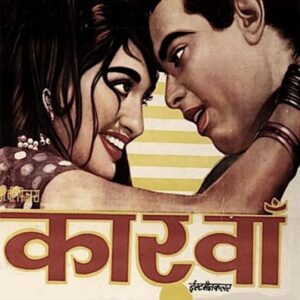
1971, Caravan. The Pancham Magic for Nasir Hussain was well established and blooming. Caravan’s music has become legendary with Piya tu Ab to aaja setting a trend with a mix of blues, big band jazz overlaid with traces of the James Bond theme, and given a final punch with Pancham’s trademark breathing patterns. Chadhti jawani meri, Goriyan kahaan tera des re, Dilbar dil se pyare were major hits. But one song that is oft-overlooked is “Ab jo miley hai baahon ko baahon me mein“. What’s unique about the songs is Asha’s singing for two onscreen characters – one is the second heroine (Aruna Irani) who is trying to seduce the hero (Jeetendra) At the same time, the main heroine (Asha Parekh), is crying for the hero’s understanding. The film was a huge hit, and so were the songs.
1973 set the reputation of the Hussain – Pancham – Majrooh combo forever. Yaadon ki Baraat was a diamond jubilee hit and even ran in Madras for about 50 weeks, no mean feat in a film mad city not exactly known for encouraging Hindi films. The story of three brothers separated at birth was an old formula, and the title song is the one that would bring them together. All the songs were massive hits, and it isn’t easy to decide which one is the best-picturized one. While Chura liya hai tumne jo dil ko was a tease from both the man and the woman, Meri soni meri tamanna was a full-throated declaration of love by the hero. However, the extended song sequence that starts with Aapke kamre me koi rehta hai speaks of a filmmaker in absolute control of the medium. The 10-minute song sequence shows the 2nd male lead and his heroine teasing each other in the club’s environment. At the same time, the slow rhythm steadily increases in speed culminating in a repeat of “dum maro dum“.
If anyone thought Hussain couldn’t top it, then he went two steps ahead with the “competition song” in Hum Kisi se kum nahin (1977), yet another hit and breezy entertainer. This was yet another enthralling ten-minute extended song starting with Chand mera dil to Aa dil Kya through Tum Kya jaano and ending with the Abba copy Mil gaya humko saathi mil gaya. Once again, it was a slow start, and the music and the singing speeded up till it reached the competition between the two men vying for the heroine.
In the 1980s, Hussain seemed to have lost his magic touch! His three films Zamane ko Dikhana Hai (1981), Manzil Manzil (1984) and Zabardast (1985) were all flops. Zabardast was indeed a sad effort in that it had stories and situations from all his past films. In spite of the films being flops, rarely were the songs boringly picturized. Zamane ko Dikhana Hai had a high-energy song Dil Lena khel hai dildar ka picturized on Rishi Kapoor, who lip-synced to Pancham’s voice. Another innovative picturization was Hoga tumse pyara kaun where the hero Rishi Kapoor wooed the heroine while dancing on the rooftop of the toy train in Ooty.
Somehow Pancham’s music was also average in these three movies. With Qayamat Se Qayamat Tak (1988), Hussain ditched Pancham and settled for newcomers Anand Milind befitting the new fresh faces Aamir Khan and Juhi Chawla. The formula worked even though the story was an ancient tragedy of star-crossed lovers belonging to warring families. Jo Jeeta Wohi Sikandar was also directed by his son Mansoor Khan, and again Pancham was nowhere in the picture.
The ones page script formula had indeed run out in the 1980s. Still, the basic idea of the hero deceiving the heroine or some other characters was there in both Qayamat Se Qayamat Tak and Jo Jeeta Wohi Sikandar.
His breezy entertainers, which always left a happy feeling with the audience, can be perhaps summed by the song “Nisulataano re, Pyaar ka Mausam Aaya.“


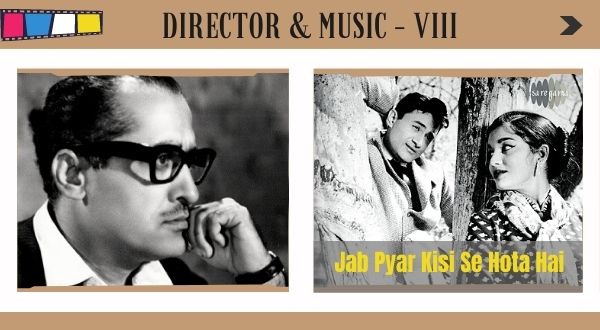

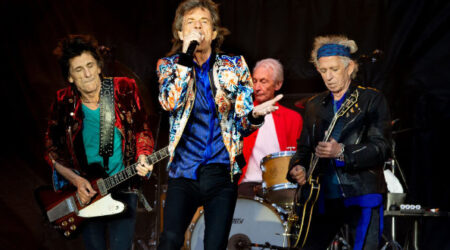
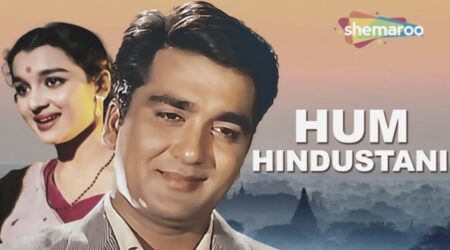
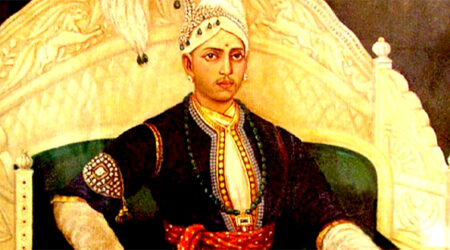
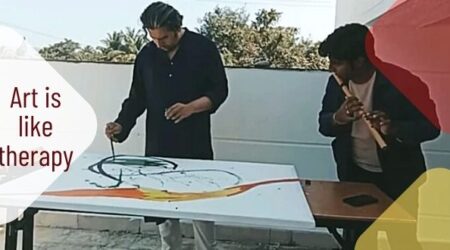
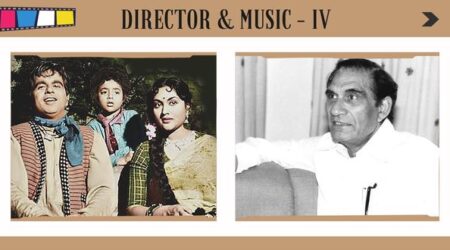

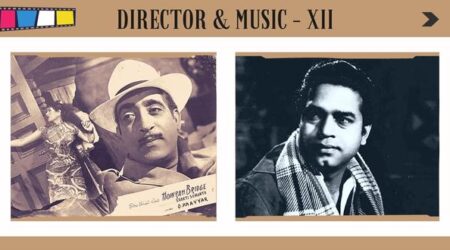
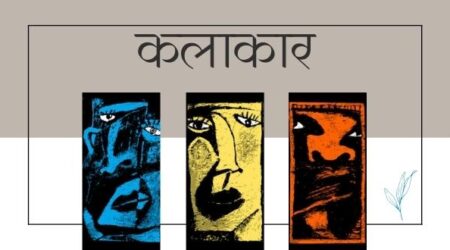


Comments (11)
Brilliant..
The joke about Nasir Hussain and his one-pager is too close to reality. I guess the audience wanted the story only as a backdrop for the music, which was the true hero in all his movies. Well written ??
A nostalgic note on Nasir Hussain always gives me goosebumps. Thanks for a great post. I enjoyed most of his films, but Caravan remains my top favorite from his oeuvre and is also among my all-time 10 top favorite Hindi films. It has excellent screenplay, superb acting performances by Jeetendra (yes, him), Asha Parekh, and Aruna Irani; and fabulous music by Pancham. Nasir Hussain’s deft direction shows in every frame. How did you forget to mention one of Pancham’s finest ‘kitna pyaara waada hai’? The same-old-story is not repeated in this film but fora change the heroine pretends to be a poor girl to the hero who pretends to be an educated guy 🙂 I think Nasir got it right on his day 1 in Bombay that you can entertain anyone with a 100 different pretenses.
Phir Wohi Dil Laya Hoon and its marvelous music never fail to delight me. Asha Bhosle’s fantastic rendition of ‘aankhon se jo utri hai’ makes it one of her finest songs to date. I just cannot get enough of it – oh my Lord, what a song and what a singing!! The heroine is not drunk in the song (as you say) – she is very much sober in it. I am thrilled to note that you also find ‘na jaa o mere humdam’ to be the crowning glory of the film Pyar Ka Mausam. Yes it is – lovely song and an unconventionally upbeat composition. The song reminds me of another theme in Nasir Hussain films – ‘roothhna manaana’ song in all his films until Yaadon Ki Baaraat.
I thoroughly enjoyed your recollection of Nasir Hussain’s breezy entertainers and music in them. Take a bow.
Well said. IiRC the heroine and her friends take some local fruit or berry which intoxocates them. Ram Avatar, the hero’s rotund sidekick, says this after which Asha Parekh sings Aankhon se jo utri . Whole heartedly agree with everything.
As reader Vijay Subramani has mentioned above music WAS the real hero in his films!
That O Haseena Zulfonwalee was ok on first take and that due to the untimely death of Gita Bali shooting of the song Tumne Mujhe was postponed with the sets in Mehboob studios idling for two weeks are also memorable..I never knew Devsaab was first choice for Teesri Manzil….but I am sure Vijay Anand’s break away from the Navketan banner began with Teesri Manzil..and since the article is about Nasir Hussain it is often said that he was a cyclist who could often be found pedalling his way to film offices with his sheaves of script…come to think of it from all of the late 50s and upto the 70s most film guys and film companies lived and operated between Bandra and Santacruz west..cycling would have been fun..no slums no dirt on the roads..no illegal garages..just the sea breeze and neat roads and gullies where the occasional Chevy would be of a Dev Anand or the car of a Baleaj Sahni..must have been good times..
Nasir Hussain was a recyclist too.
Well said Vijay. THE MUSIC WAS the hero in all his movies
hi Subodh
Here’s link that explains the story and the initial publicity shot with Dev Anand
https://www.magzmumbai.com/down-memory-lane-celebrating-54-years-of-teesri-manzil/
Excellent articlel. Enjoyed reading it. I had not watched his all movie but the few movie which I watched were very entertaining.
I forgot to comment that Yaadon Ki Baaraat ran for 100 weeks in Madras (now Chennai). I have a copy of a film magazine (I think it is Madhuri or Filmfare from 1975, but I have the copy) that has a story on the film’s 100-week run there.
Good analysis. His one page stories, though, had too many convolutions. Surprised that there was no mention of Kitna pyara Vada, easily among Pancham’s best.for Nasir.